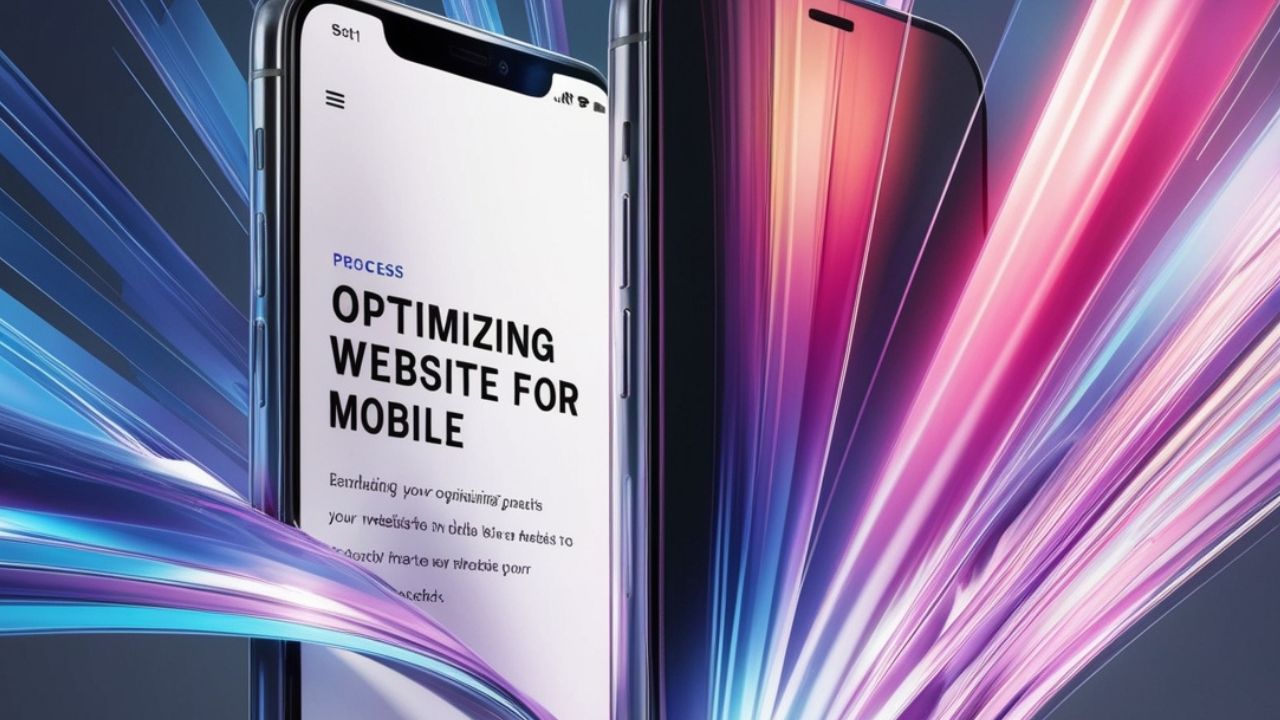In today’s digital landscape, mobile optimization is no longer optional—it’s essential. With over half of global web traffic coming from mobile devices, ensuring your website provides an excellent mobile experience is crucial for engaging users, improving search engine rankings, and driving conversions. This blog post will explore the best practices for optimizing your website for mobile devices.
1. Implement Responsive Design
Responsive design is the foundation of mobile optimization. It ensures your website adapts seamlessly to different screen sizes and orientations. Key aspects of responsive design include:
– Fluid grids that adjust content layout based on screen size
– Flexible images that scale appropriately
– Media queries to apply different styles for various device sizes
Implementing responsive design provides a consistent user experience across devices and eliminates the need to maintain separate mobile and desktop versions of your site.
2. Prioritize Page Speed
Mobile users often access websites on-the-go and may have slower internet connections. Optimizing your site’s loading speed is crucial for retaining mobile visitors. To improve page speed:
– Compress images and use appropriate file formats (e.g., WebP)
– Minify CSS, JavaScript, and HTML
– Leverage browser caching
– Use a content delivery network (CDN)
– Optimize server response time
Use tools like Google’s PageSpeed Insights to identify specific areas for improvement on your site.
3. Simplify Navigation
Mobile screens have limited space, so it’s essential to streamline your site’s navigation for easy use on smaller devices. Consider:
– Implementing a hamburger menu for main navigation items
– Using a sticky header with essential navigation elements
– Limiting the number of menu items
– Providing a clear and easily accessible search function
Ensure that users can navigate your site with one hand, using touch-friendly buttons and menus.
4. Optimize Content for Mobile Viewing
Adapt your content strategy for mobile users, who often scan content quickly. Best practices include:
– Using short paragraphs and bullet points for easy scanning
– Incorporating descriptive subheadings to break up content
– Placing the most important information at the beginning of articles
– Using a readable font size (minimum 16px) and maintaining adequate line spacing
– Ensuring sufficient color contrast for readability
Remember that mobile users may be in various environments, so make your content easy to consume in different lighting conditions and potentially distracting settings.
5. Make Buttons and Links Touch-Friendly
Ensure all interactive elements on your site are easy to tap with a finger. Best practices include:
– Making buttons at least 44×44 pixels
– Providing adequate spacing between clickable elements
– Using descriptive link text instead of generic “click here” phrases
– Making the entire button area clickable, not just the text
These practices improve usability and reduce user frustration, leading to better engagement and conversion rates.
6. Optimize Forms for Mobile
Forms can be particularly challenging on mobile devices. To improve the mobile form experience:
– Minimize the number of form fields
– Use appropriate input types (e.g., email, tel, date) to trigger the correct mobile keyboard
– Implement auto-fill where possible
– Use single-column layouts for forms
– Provide clear error messages and validation
A streamlined form process can significantly improve conversion rates on mobile devices.
7. Implement Mobile-Friendly Pop-ups
If you use pop-ups on your site, ensure they’re mobile-friendly. Google penalizes sites with intrusive interstitials that make content less accessible. For mobile-friendly pop-ups:
– Use smaller, less intrusive designs
– Make them easy to close on a touchscreen
– Consider using bottom banners instead of full-screen pop-ups
– Delay pop-ups to allow users to engage with your content first
Remember, the user experience should always take priority over aggressive marketing tactics.
8. Optimize Images and Videos
Visual content is crucial for engagement, but it can also slow down your site if not optimized properly. For mobile-friendly multimedia:
– Use responsive images that adjust size based on screen dimensions
– Compress images without significant quality loss
– Consider lazy loading for images and videos below the fold
– Provide transcripts or captions for videos to accommodate users who may not be able to play audio
Properly optimized visual content can enhance the mobile experience without sacrificing performance.
9. Leverage Mobile-Specific Features
Take advantage of mobile device capabilities to enhance user experience:
– Implement click-to-call functionality for phone numbers
– Use geolocation for location-based services or store finders
– Enable social sharing with mobile-friendly buttons
– Utilize device orientation for interactive elements or games
These features can make your site more engaging and useful for mobile users.
10. Test Across Multiple Devices and Browsers
Mobile devices come in various sizes and run different operating systems and browsers. Regular testing is crucial to ensure a consistent experience across devices. Consider:
– Using emulators and real devices for testing
– Testing on both iOS and Android devices
– Checking your site on multiple browsers (Chrome, Safari, Firefox, etc.)
– Using tools like BrowserStack for comprehensive device testing
Regular testing helps identify and address issues before they impact your users.
11. Implement Accelerated Mobile Pages (AMP)
AMP is an open-source framework designed to create fast-loading mobile web pages. While not necessary for all sites, AMP can be beneficial for:
– News articles and blog posts
– E-commerce product pages
– Landing pages for ads
AMP pages load almost instantly, providing an excellent user experience and potentially boosting search engine rankings.
12. Monitor Mobile Analytics
Regularly review your mobile analytics to understand how users interact with your site on mobile devices. Key metrics to track include:
– Mobile traffic percentage
– Mobile conversion rates
– Mobile bounce rates
– Average time on site for mobile users
– Most visited pages on mobile
Use these insights to continually refine your mobile optimization strategy.
13. Consider Progressive Web Apps (PWAs)
Progressive Web Apps combine the best features of mobile websites and native apps. They offer:
– Offline functionality
– Push notifications
– Home screen installation
– Fast loading times
While not suitable for every website, PWAs can significantly enhance the mobile user experience for certain types of applications.
Conclusion
Optimizing your website for mobile is an ongoing process that requires attention to detail and a commitment to providing the best possible user experience. By implementing these best practices, you can create a mobile-friendly website that engages users, improves search engine rankings, and drives conversions.
Remember that mobile optimization is not a one-time task. As mobile technology and user behaviors evolve, it’s essential to stay informed about new trends and continuously refine your mobile strategy. Regularly test your site on mobile devices, gather user feedback, and analyze mobile performance metrics to identify areas for improvement.
By prioritizing mobile optimization, you’ll not only meet the expectations of today’s mobile-first users but also position your website for success in an increasingly mobile-dominated digital landscape. Start implementing these best practices today, and watch your mobile user experience—and your overall online presence—improve dramatically.







